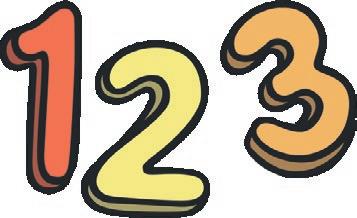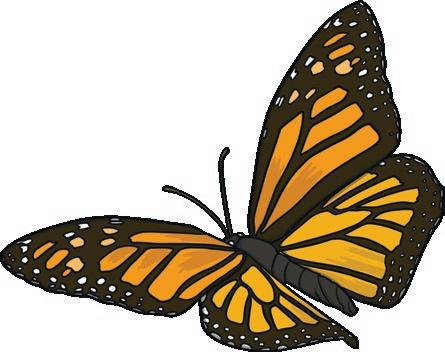EYFS Development Matters Birth to Three - Prime Areas
Communication and Language
• Turn towards familiar sounds. They are also startled by loud noises and accurately locate the source of a familiar person’s voice, such as their key person or a parent.
• Gaze at faces, copying facial expressions and movements like sticking out their tongue. Make eye contact for longer periods.
• Watch someone’s face as they talk.
• Copy what adults do, taking ‘turns’ in conversations (through babbling) and activities. Try to copy adult speech and lip movements.
• Enjoy singing, music and toys that make sounds.
• Recognise and are calmed by a familiar and friendly voice.
• Listen and respond to a simple instruction.
• Make sounds to get attention in different ways (for example, crying when hungry or unhappy, making gurgling sounds, laughing, cooing or babbling).
• Babble, using sounds like ‘baba’, ‘mamama’.
• Use gestures like waving and pointing to communicate.
• Reach or point to something they want while making sounds.
• Copy your gestures and words.
• Constantly babble and use single words during play.
• Use intonation, pitch and changing volume when ‘talking’.
• Understand single words in context – ‘cup’, ‘milk’, ‘daddy’.
• Understand frequently used words such as ‘all gone’, ‘no’ and ‘bye-bye’.
• Understand simple instructions like “give to nanny” or “stop”.
• Recognise and point to objects if asked about them.
• Generally focus on an activity of their own choice and find it difficult to be directed by an adult.
• Listen to other people’s talk with interest, but can easily be distracted by other things.
• Make themselves understood, and can become frustrated when they cannot.
• Start to say how they are feeling, using words as well as actions.
• Start to develop conversation, often jumping from topic to topic.
• Develop pretend play: ‘putting the baby to sleep’ or ‘driving the car to the shops’.
• Use the speech sounds p, b, m, w.
• Pronounce:
- l/r/w/y - s/sh/ch/dz/j
- f/th - multi-syllabic words such as ‘banana’ and ‘computer’
• Listen to simple stories and understand what is happening, with the help of the pictures.
Communication and Language
• Identify familiar objects and properties for practitioners when they are described. For example: ‘Katie’s coat’, ‘blue car’, ‘shiny apple’.
• Understand and act on longer sentences like ‘make teddy jump’ or ‘find your coat’.
• Understand simple questions about ‘who’, ‘what’ and ‘where’ (but generally not ‘why’).
Personal, Social and Emotional Development
• Find ways to calm themselves, through being calmed and comforted by their key person.
• Establish their sense of self.
• Express preferences and decisions. They also try new things and start establishing their autonomy.
• Engage with others through gestures, gaze and talk.
• Use that engagement to achieve a goal. For example, gesture towards their cup to say they want a drink.
• Find ways of managing transitions, for example from their parent to their key person.
• Thrive as they develop self-assurance.
• Look back as they crawl or walk away from their key person. Look for clues about how to respond to something interesting.
• Play with increasing confidence on their own and with other children, because they know their key person is nearby and available.
• Feel confident when taken out around the local neighbourhood, and enjoy exploring new places with their key person.
• Feel strong enough to express a range of emotions.
• Grow in independence, rejecting help (“me do it”). Sometimes this leads to feelings of frustration and tantrums.
• Begin to show ‘effortful control’. For example, waiting for a turn and resisting the strong impulse to grab what they want or push their way to the front.
• Be increasingly able to talk about and manage their emotions.
• Notice and ask questions about differences, such as skin colour, types of hair, gender, special needs and disabilities, and so on.
• Develop friendships with other children.
• Safely explore emotions beyond their normal range through play and stories.
• Are talking about their feelings in more elaborated ways: “I’m sad because...” or “I love it when ...”.
• Learn to use the toilet with help, and then independently.
Physical Development
• Lift their head while lying on their front.
• Push their chest up with straight arms.
• Roll over: from front to back, then back to front.
• Enjoy moving when outdoors and inside.
• Sit without support.
• Begin to crawl in different ways and directions.
• Pull themselves upright and bouncing in preparation for walking.
• Reach out for objects as co-ordination develops.
• Pass things from one hand to the other. Let go of things and hands them to another person, or drops them.
• Gradually gain control of their whole body through continual practice of large movements, such as waving, kicking, rolling, crawling and walking.
• Clap and stamp to music.
• Fit themselves into spaces, like tunnels, dens and large boxes, and move around in them.
• Enjoy starting to kick, throw and catch balls.
• Build independently with a range of appropriate resources.
• Begin to walk independently – choosing appropriate props to support at first.
• Walk, run, jump and climb – and start to use the stairs independently.
• Spin, roll and independently use ropes and swings (for example, tyre swings).
• Sit on a push-along wheeled toy, use a scooter or ride a tricycle.
• Use large and small motor skills to do things independently, for example manage buttons and zips, and pour drinks.
• Show an increasing desire to be independent, such as wanting to feed themselves and dress or undress.
• Start eating independently and learning how to use a knife and fork.
• Develop manipulation and control.
• Explore different materials and tools.




